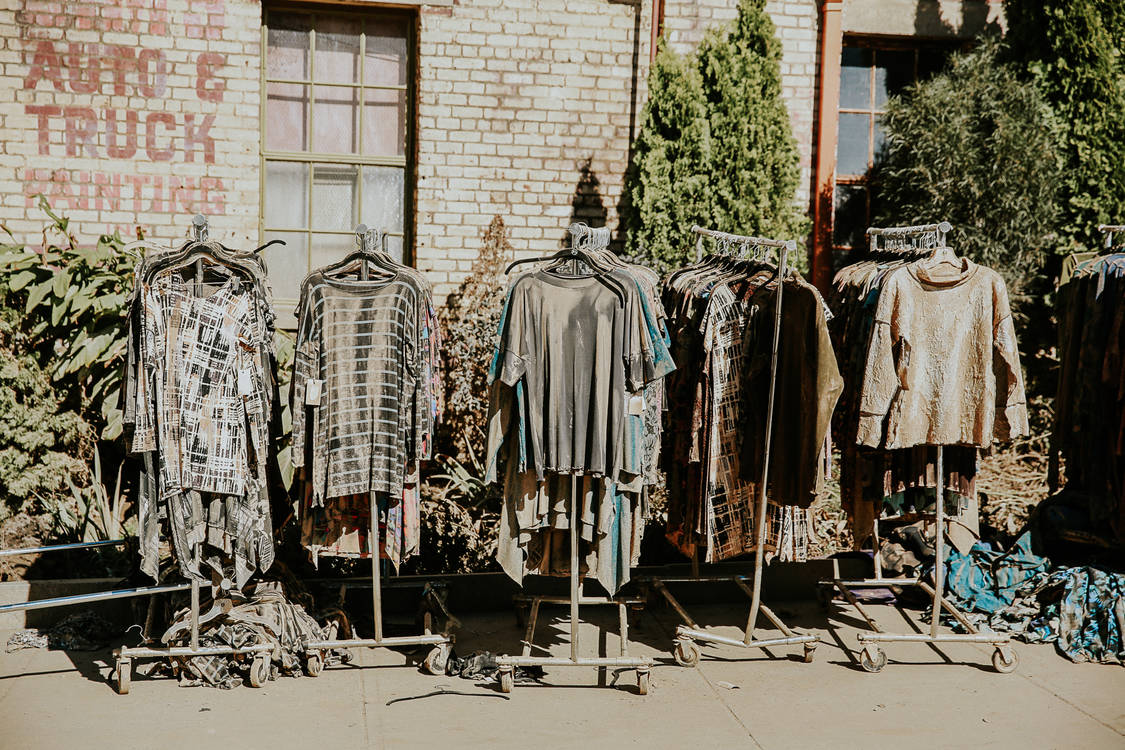By Dennis Ray
River Arts District Recovery
A month after Hurricane Helene’s devastating destruction, with the waters receded and assessments underway, the greater Asheville area is left wondering whether the River Arts District (RAD) will rise again or fade into decline.
According to Jeffrey Burroughs, President of the River Arts District Artists, “There are still many unknowns at this point, but I can say the RAD isn’t going anywhere. We’ll rebuild, though where and how is still up in the air. I’ve been talking with investors, artists, the city, and business owners in and around the RAD, and much is in the works.”
Multiple artists and RAD gallery owners have proposed various solutions for rebuilding, such as constructing art studios on pillars 15 to 20 feet above the ground or redesigning the river parklands to temporarily hold more floodwaters during storms. While these options have high upfront costs, they could prevent future losses. According to the Federal Emergency Management Agency (FEMA), implementing flood mitigation strategies, such as elevating structures, can significantly reduce rebuilding costs after disasters. FEMA’s Flood Mitigation Assistance Program highlights the long-term financial benefits of preventative measures.

Furthermore, the National Oceanic and Atmospheric Administration (NOAA) warns that more frequent and severe storms will continue to impact the Gulf Coast and extend into North Carolina as climate change progresses. Their data suggests that the frequency of billion-dollar weather events has increased, making proactive flood control measures even more critical (visit www.noaa.gov/climate and www.ncdc.noaa.gov/billions).
Many may wonder if it is even worth preserving the RAD, as early reports estimate that 80% of its structures have been damaged, and half of the artists have been displaced. So the key question is how to move forward.
One solution might be to rebrand the River Arts District as “The River District,” featuring new buildings set further back, like hotels, condos, upscale shops, and tourist-driven restaurants, while transforming the lower area into a recreational hub with mobile vendors offering food, souvenirs, coffee, beer, and other beverages.
“Not so fast,” Burroughs argues,”That’s fine if we are talking about a few artists, a couple of small galleries, and a half dozen tourist-driven mom-and-pop shops. But for it to be a full River Arts District recovery it is going to require a huge amount of support by everyone. Before the storm, the RAD consisted of over 350 artists in working studios, with an additional 400 plus showing their works throughout many of the District’s galleries.”
Since the day after the flood, Burroughs has worked tirelessly to address the core issues facing city leaders, investors, business owners, the tourism and hospitality industry, and the Asheville City Council. The problem Burroughs sees isn’t artists losing their studios. What is at stake is tourism, which has grown into Asheville’s number-one source of revenue over the past couple of decades, surpassing the medical, textile, and agricultural industries. Making the wrong choice could easily send the city into a downward spiral that may take years or decades to recover.

In the early 2020s, visitors to Asheville generated $2.97 billion in annual spending, which equates to about 20% of Buncombe County’s total economy, according to data from Explore Asheville.
Americans for the Arts, a nonprofit organization that advocates for the advancement, recognition, and sustainability of the arts in the United States, reports Asheville’s arts sector alone is estimated to generate around $68 million. A study by Arts North Carolina estimates that around 10-15% of tourism revenue in Asheville is tied to the arts, meaning that between $200-$300 million is brought into the local economy through visitors coming here specifically to purchase art, through their overall spending, including shopping, hotel stays, dining, and other fun things like river rafting, hiking, kayaking, taking in a play or concert during their time here.
So, it’s easy to overlook the RAD’s role in shaping Asheville’s success, much like how the mega-stars often overshadow the contributions of an NBA team’s supporting players. Without the collective effort, the city—or the team—wouldn’t have reached its full potential.
However, the RAD played an even more essential part in Asheville’s economic growth, even far more so than the above numbers suggest. More data from Explore Asheville reveals that in the early 1990s, Asheville’s total tourism revenue averaged around $60 million, and by 2000, when the RAD was still in its infancy, Asheville’s total tourism revenue reached approximately $80 million.
The city had great beer, excellent restaurants, the Blue Ridge Parkway, and the Biltmore House, as it does now, yet its tourism wasn’t growing any faster than any other Appalachian city with a population of over 50,000. To put this in perspective, as the art scene in Asheville expanded, so did the tourism revenue. It reached approximately $2 billion by 2010 and is now, as mentioned earlier, nearing $3 billion.
When it comes to the future River Arts District Recovery, optimisim though high, requires effort on everyone in the community.
“It will trigger a negative domino effect if the RAD ceases to be a central hub for artists, galleries, studios, and other art-related businesses. People are attracted to the area because of the unique concentration of artists creating and selling their work, something that sets Asheville apart,” Burroughs says. “Whether you’re an art lover or just someone who enjoys living in a thriving city, supporting the RAD—whether through donations or volunteer work—is crucial.”
The arts community invites everyone to join in these recovery efforts, whether through donations, attendance at events, or simply supporting local artists by buying online. For more information please visit riverartsdistrict.com or follow them on Instagram
There is continued interest in new artists arriving in the RAD—Check out Andy Buchanan Crafts Art Inspired By Nature And Bold Experimentation










